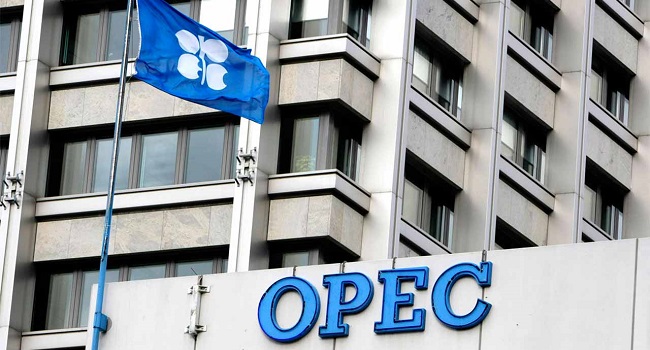Business
Nigeria retains Africa lead, pumps 1,277mbpd crude in June, Angola, Algeria, Congo production drop

The Organization of the Petroleum Exporting Countries (OPEC) has disclosed Nigeria maintained its position as the largest crude oil producer in Africa in June, while production in Angola, Algeria and Congo dropped.
According to OPEC Monthly Oil Market Report for June, released on Thursday, Nigeria kept its position after producing 1,298 million barrels per day (bpd).
This is based on Direction Communication to OPEC. It shows Nigeria increased its production output compared to the 1,277 million barrels bpd pumped in May.
Although, Secondary Sources put Nigeria’s crude output at 1,249 million barrels per day last month while recording 1,184 million barrels for May.
Angola followed next, with Direct Communication stating the country produced 1,102 million bpd in June, lower than the 1,148 million barrels reported the month before.
READ ALSO:Angola, Nigeria top OPEC’s oil production lists for Africa
However, Secondary Sources said Angola’s crude oil output increased slightly in the review month, rising from 1,111 million barrels in May to 1,119 million bpd in June.
Algeria’s Direct Communication showed that production declined to 957,000 barrels, from 973,000 bpd in May, while Congo recorded a slight dip to 262,000 barrels bpd last month, from 266,000 barrels.
Meanwhile, according to OPEC’s secondary sources, “total OPEC-13 crude oil production averaged 28.19 mb/d in June 2023, higher by 91 tb/d m-o-m. Crude oil output increased mainly in IR Iran and Iraq, while production in Angola declined.”
Commenting on Nigeria’s economy, the oil cabal said in the report: “Nigeria’s economy grew by 3.3% in 2022, but is forecast to decelerate in 2023. Growth in 1Q23 stood at 2.4% y-o-y in 1Q23, after growth of 3.6% in 4Q22, an indicator for this year’s anticipated slowdown.
“The seasonally adjusted 1Q23 GDP growth rate on a quarterly basis even contracted by 0.8%. Weakening growth in the services, manufacturing, and agricultural sectors are developments to be considered in the 2023 growth trend.
“Moreover, high inflation continues to burden the economy. Inflation data for May shows an ongoing acceleration, with an annual rate of 22.4% y-o-y, compared with 22.2% in April and 22% in March. Food inflation has been a key factor in this rise, reaching 24.8% y-o-y in May, after 24.6% in April and 24.5% in March.
“Consequently, the Central Bank of Nigeria lifted the key policy rate by 50 bp to 18.5% in May, but this policy rate has remained unchanged since. Despite the challenges, May’s Stanbic IBTC Bank Nigeria PMI held up well, retracting only slightly to stand at 52.3 in June, after 54 in May and 53.8 in April.”
Join the conversation
Support Ripples Nigeria, hold up solutions journalism
Balanced, fearless journalism driven by data comes at huge financial costs.
As a media platform, we hold leadership accountable and will not trade the right to press freedom and free speech for a piece of cake.
If you like what we do, and are ready to uphold solutions journalism, kindly donate to the Ripples Nigeria cause.
Your support would help to ensure that citizens and institutions continue to have free access to credible and reliable information for societal development.
















